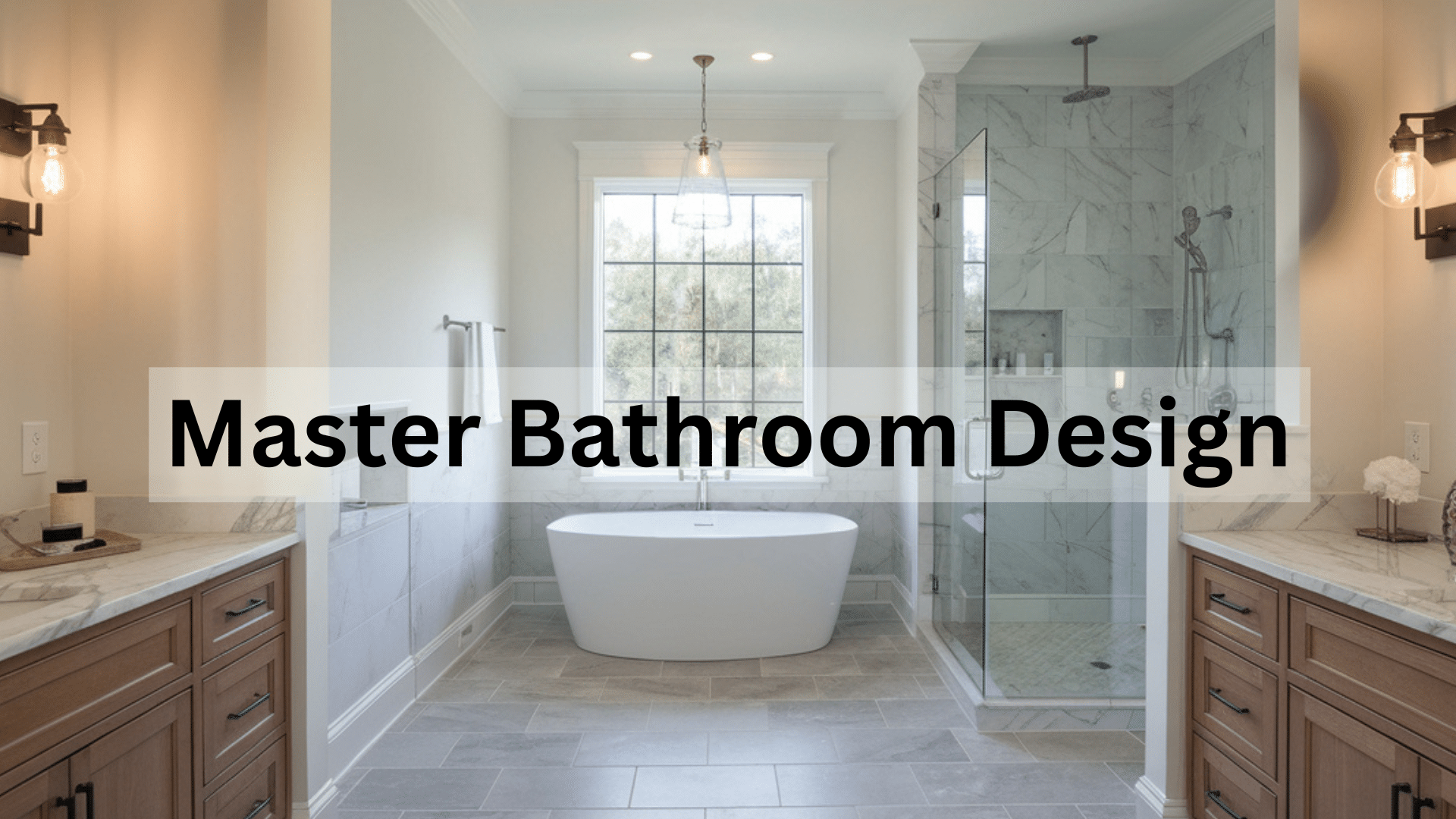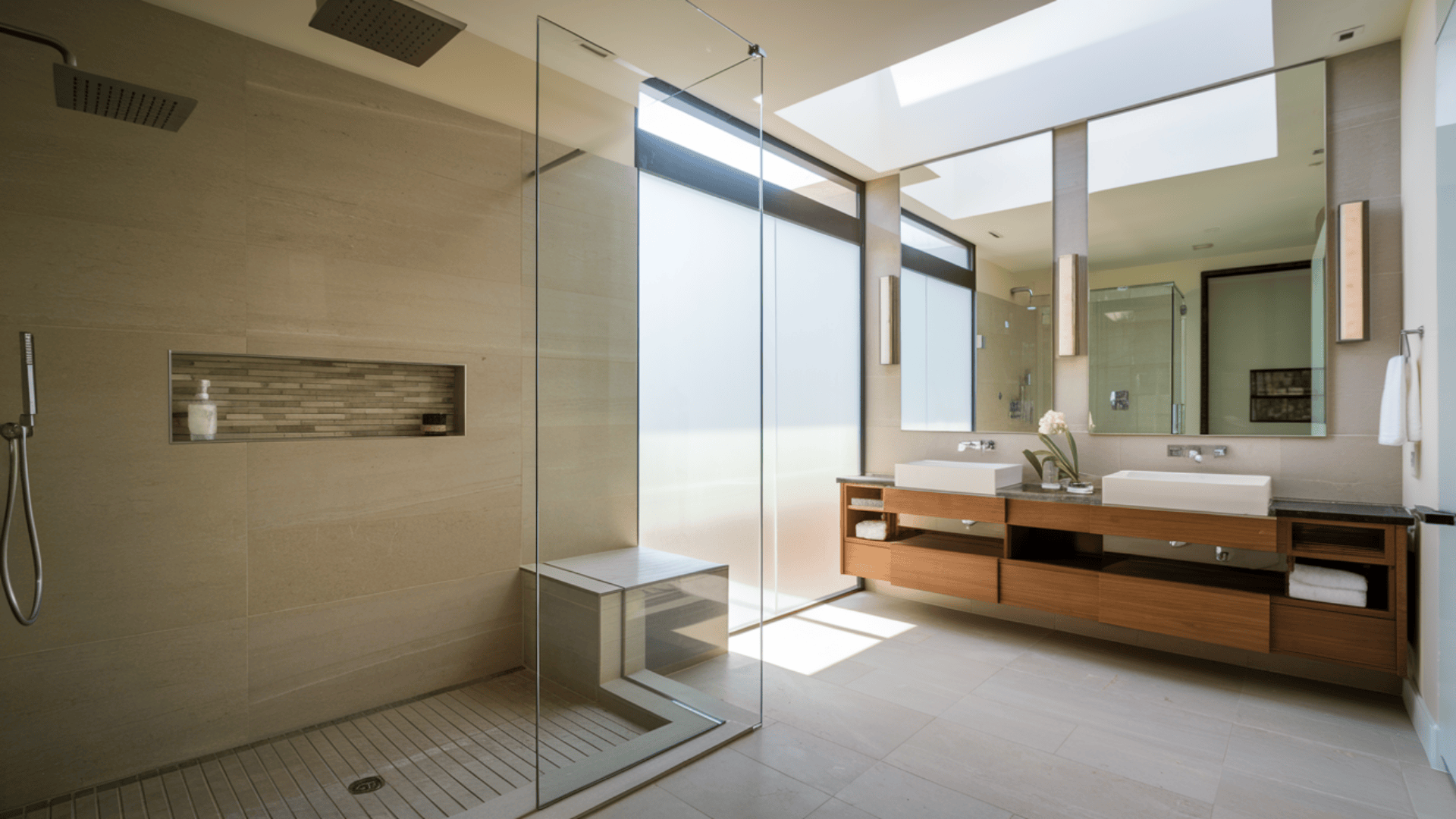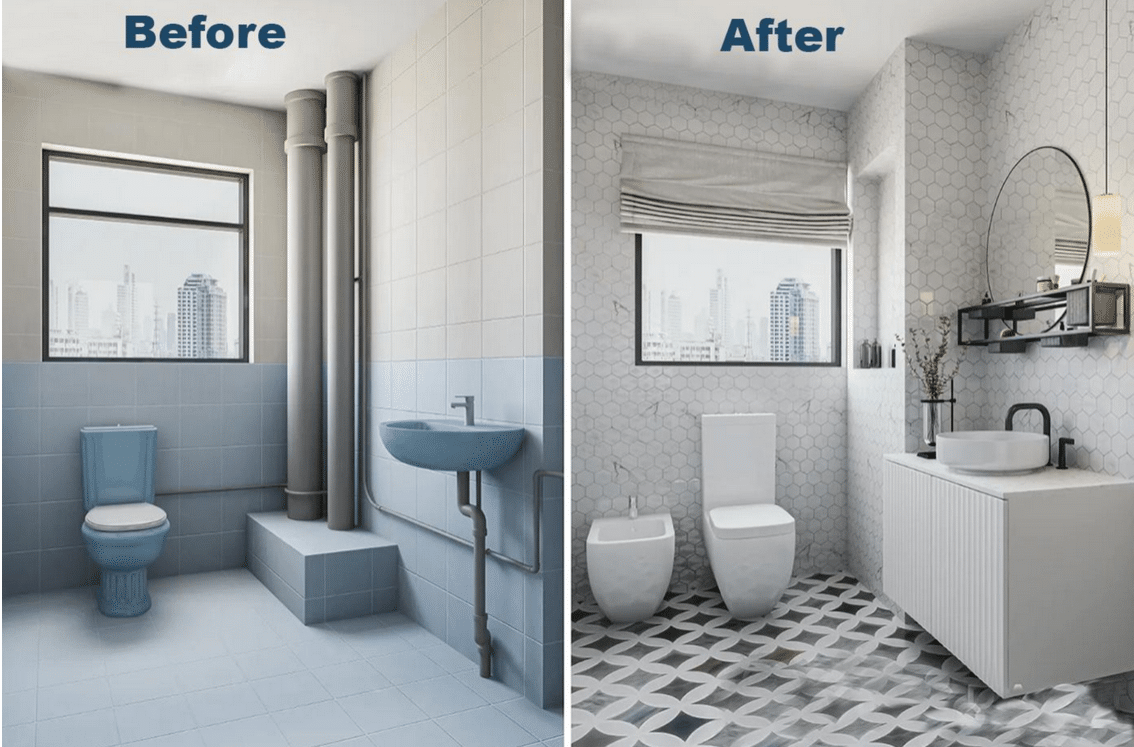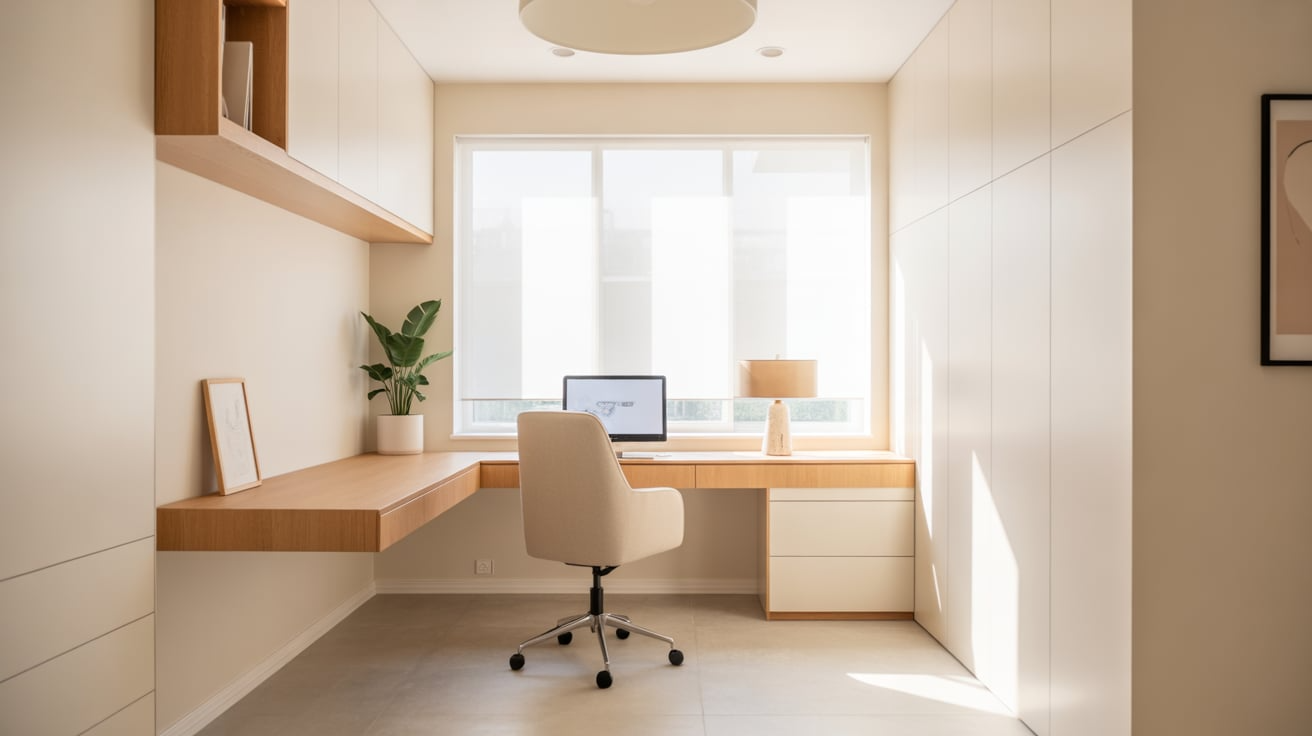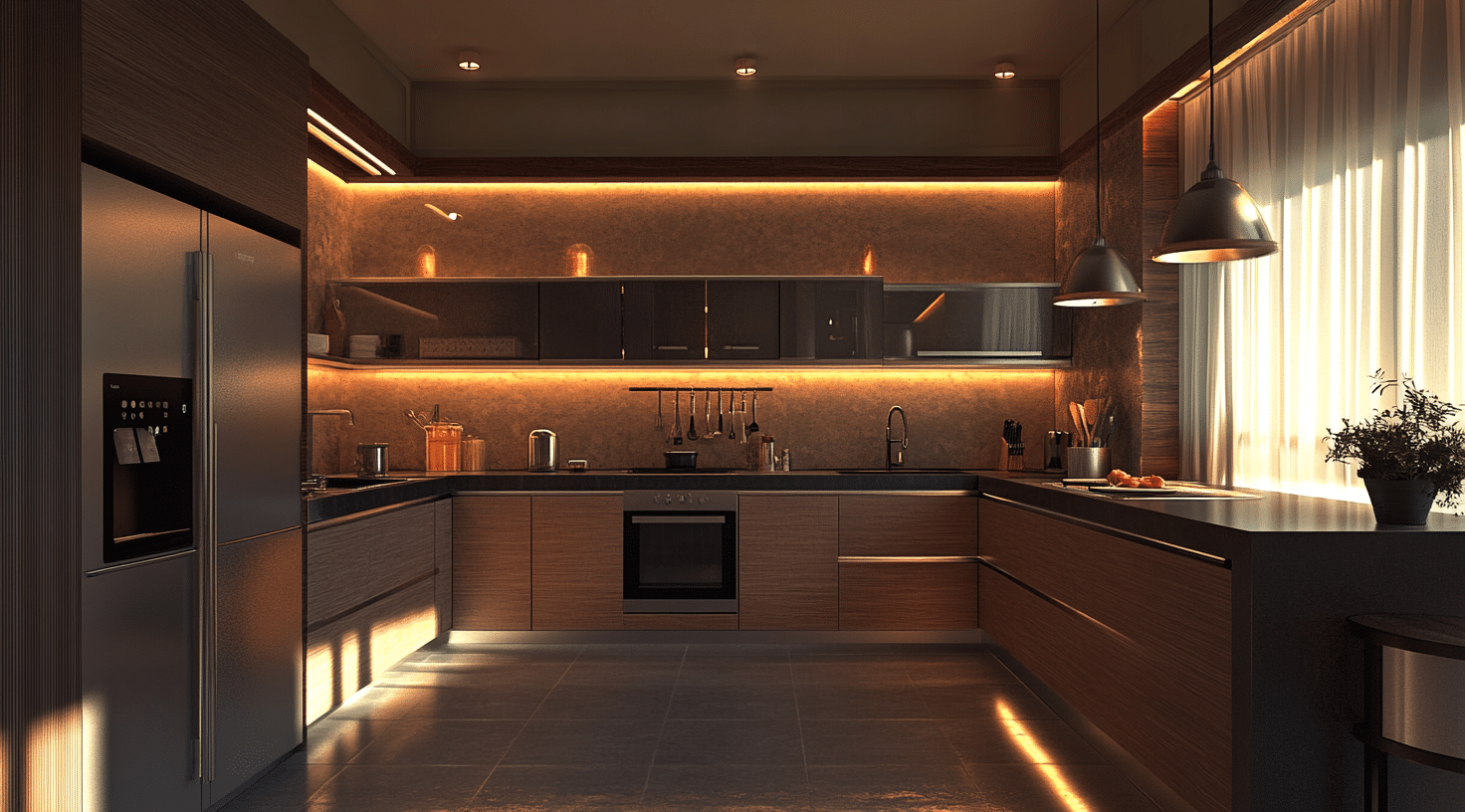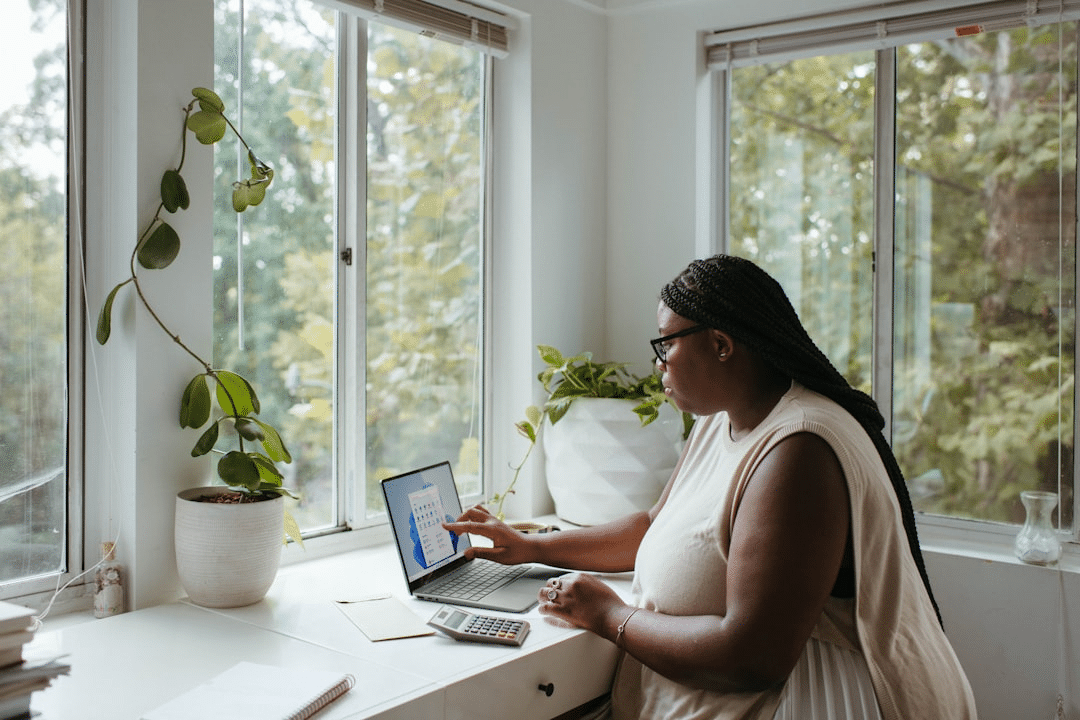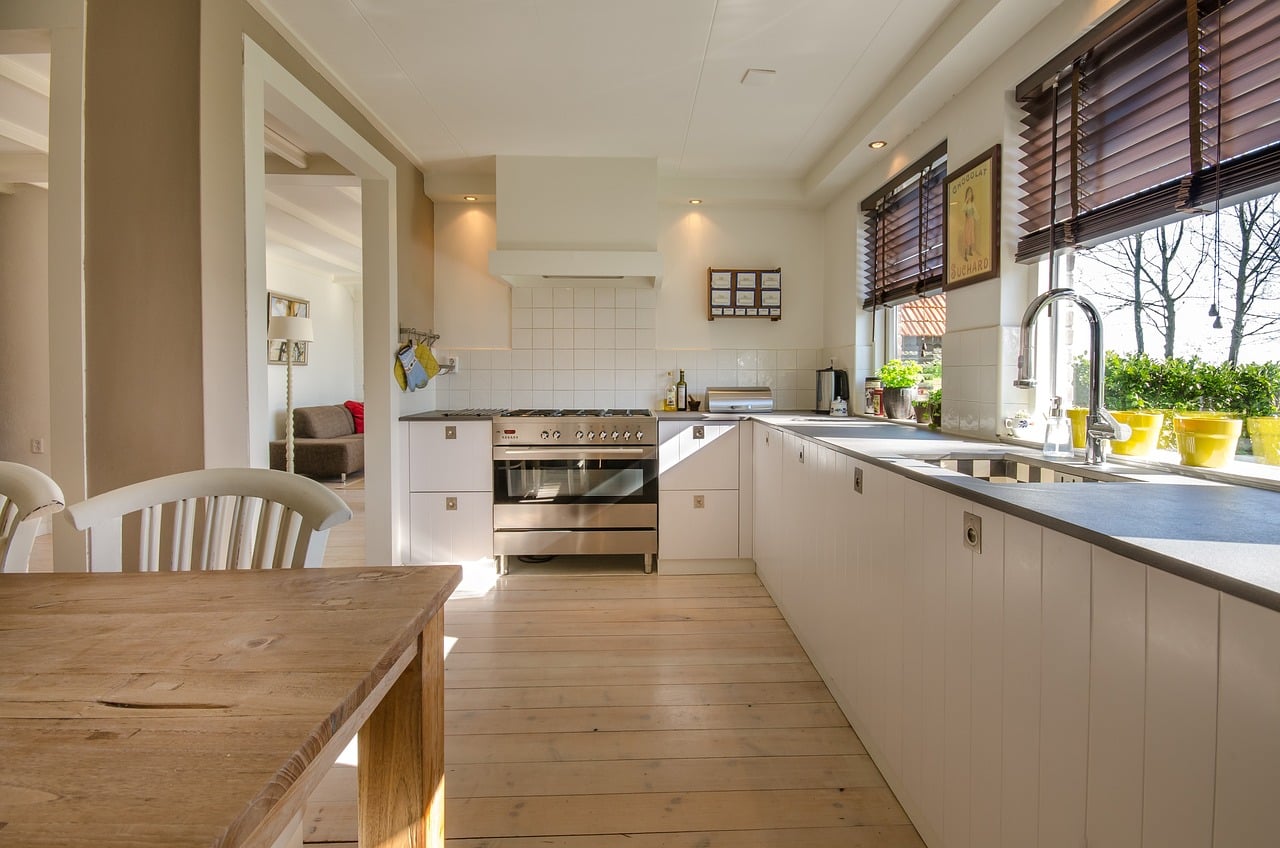Master Bathroom Design Ideas for Style and Comfort
Designing a master bathroom that truly suits your needs and style can turn an everyday space into a personal retreat. A well-planned bathroom blends functionality with comfort, creating a space that works for your daily routine while also offering relaxation.
From nature-inspired designs to luxury elements and spa-like features, there are endless possibilities.
This guide will walk you through the latest trends, practical layout ideas, and eco-friendly choices to help you create a bathroom that’s both stylish and functional, all while staying within your budget.
Let’s turn your bathroom around!
Current Trends in Master Bath Design
Today’s designs focus on combining comfort, style, and practicality to create spaces that serve multiple purposes. The master bathroom has changed from a basic functional space into an important area for relaxation and self-care.
Nature-Inspired Designs

Bringing natural elements into bathroom spaces continues to gain popularity. This approach creates a calm, grounding atmosphere that helps reduce stress.
Many homeowners now select genuine stone countertops and shower walls that showcase unique patterns and textures. Wood accents on vanities, shelving, and even ceilings add warmth to what might otherwise be a cold space.
Indoor plants that thrive in humid conditions improve both air quality and visual appeal, while earth-tone color schemes promote relaxation and connection to the outdoors.
These natural touches can change a standard bathroom into a more organic and soothing environment.
Luxury Elements for Your Bathroom
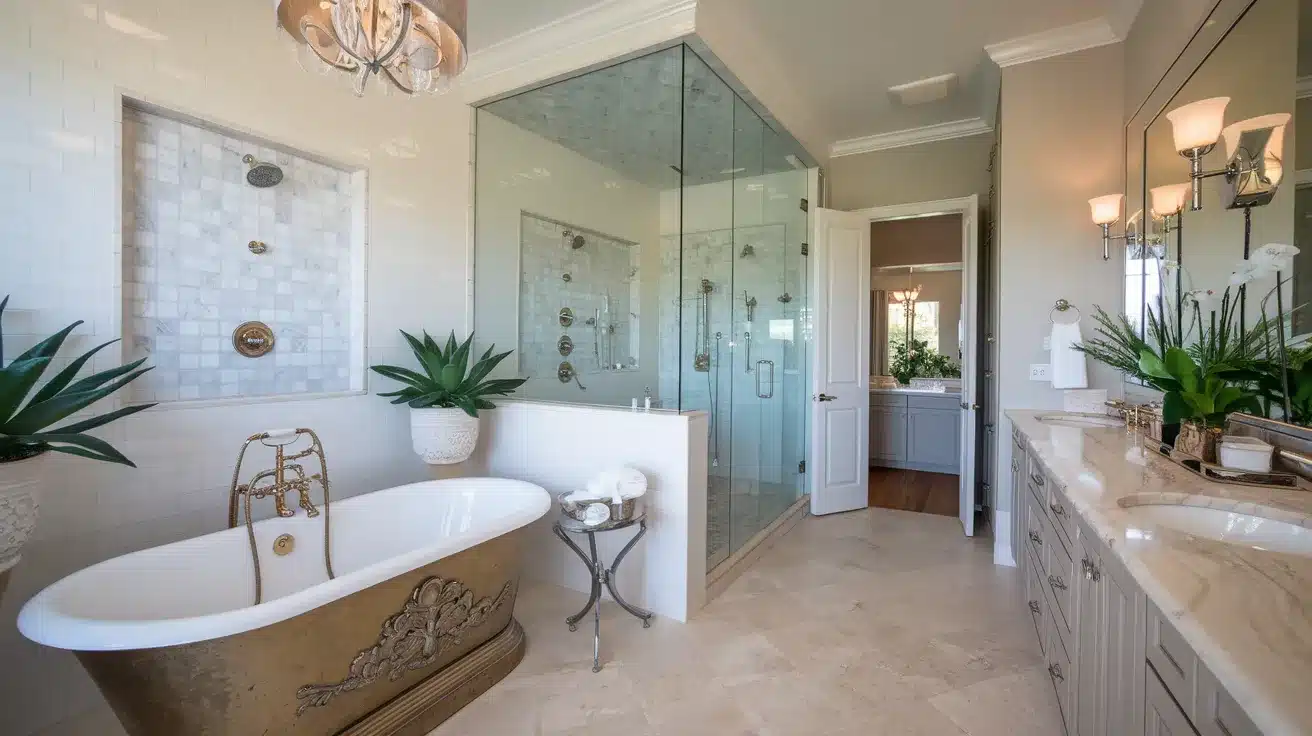
Certain features that were once found only in high-end hotels are now becoming standard in home bathrooms.
Freestanding tubs serve as focal points, offering both visual appeal and comfortable bathing options. Glass-enclosed showers with multiple spray options and minimal metal framing create a sense of openness while containing water spray.
Floating vanities make spaces appear larger and simplify floor cleaning. Smart mirrors with integrated lighting, defoggers, and sometimes digital displays add both function and a modern touch.
These luxury additions can significantly improve both the usability and value of a master bathroom without requiring complete reconstruction.
Spa-Like Features
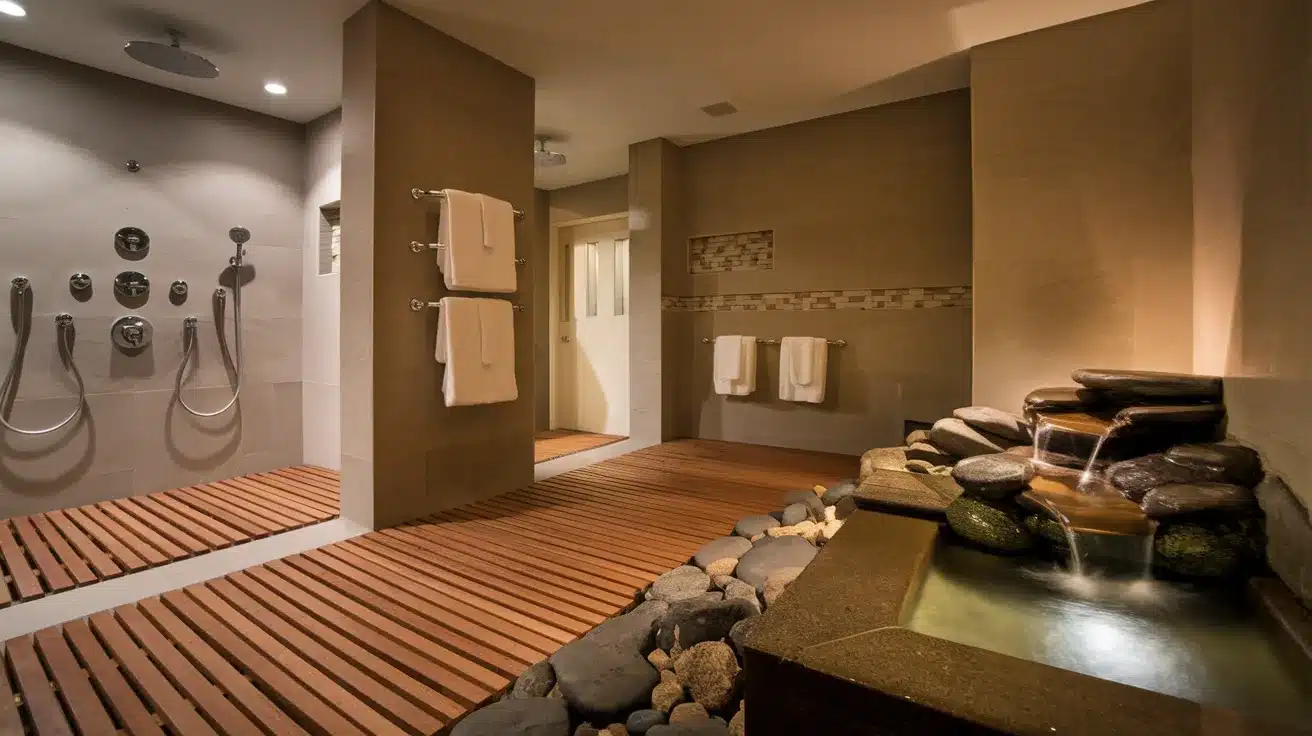
Many homeowners want their bathrooms to provide the relaxation they experience at professional spas.
Heat-controlling systems like heated floors, towel warmers, and temperature-regulating showers extend comfort throughout the bathing experience.
Some designs incorporate water features that create calming sounds and visual movement. Specialized lighting that can be adjusted for different moods and activities helps transition the space from morning preparation to evening relaxation.
Extra-large shower areas with seating and multiple water sources offer comfort and flexibility. Thoughtful storage solutions keep plush towels, robes, and personal care items within easy reach.
These thoughtful additions transform ordinary bathrooms into personal wellness spaces that support daily self-care routines.
Practical Layout Ideas for Master Bathrooms
The arrangement of fixtures in your master bathroom directly affects how you use the space daily.
Classic vs. Modern Layouts
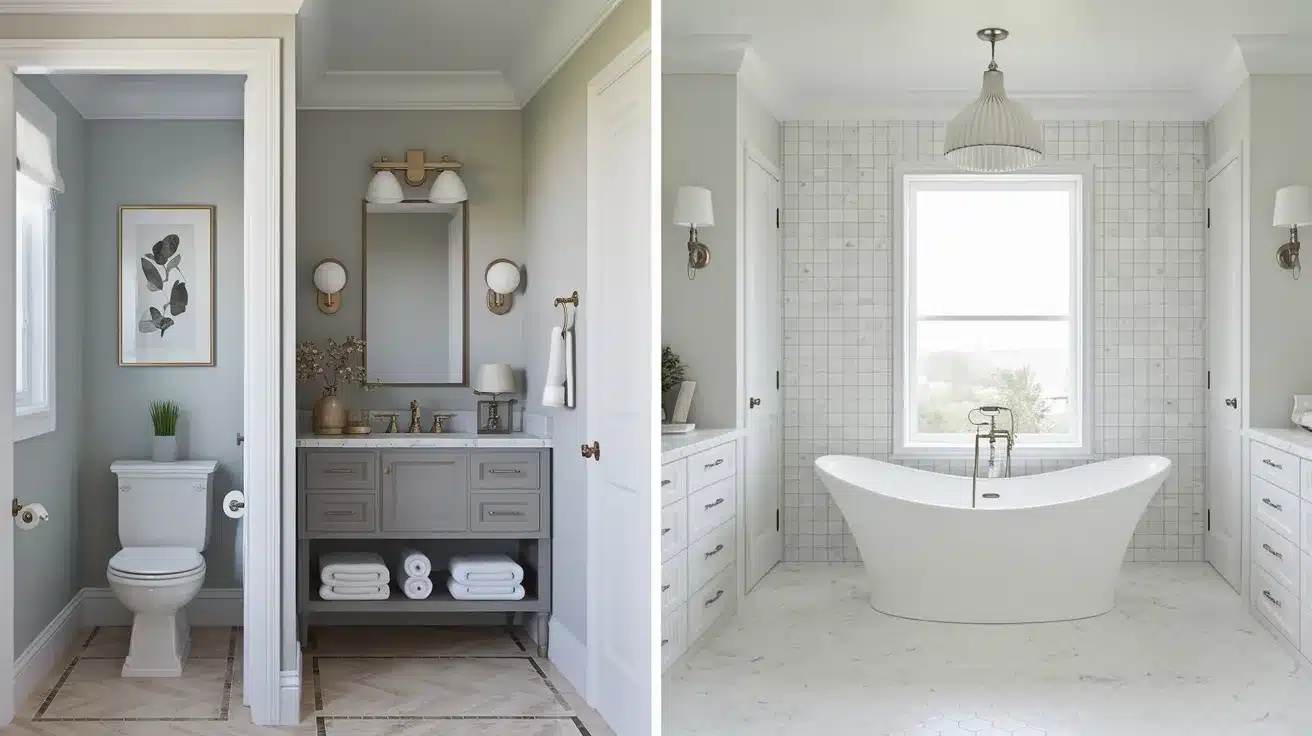
Traditional bathroom layouts separate elements with walls or partitions. Toilets often have their own small room for privacy.
Vanities typically face the main space, with tubs against walls. This approach creates clear zones for different activities.
Modern layouts feature fewer visual breaks and more open floor plans. Freestanding tubs might serve as central features, with other elements arranged around them.
These designs focus on creating visual space and maximizing natural light. Your daily routine should guide which style works best for you.
Space-Saving Layouts
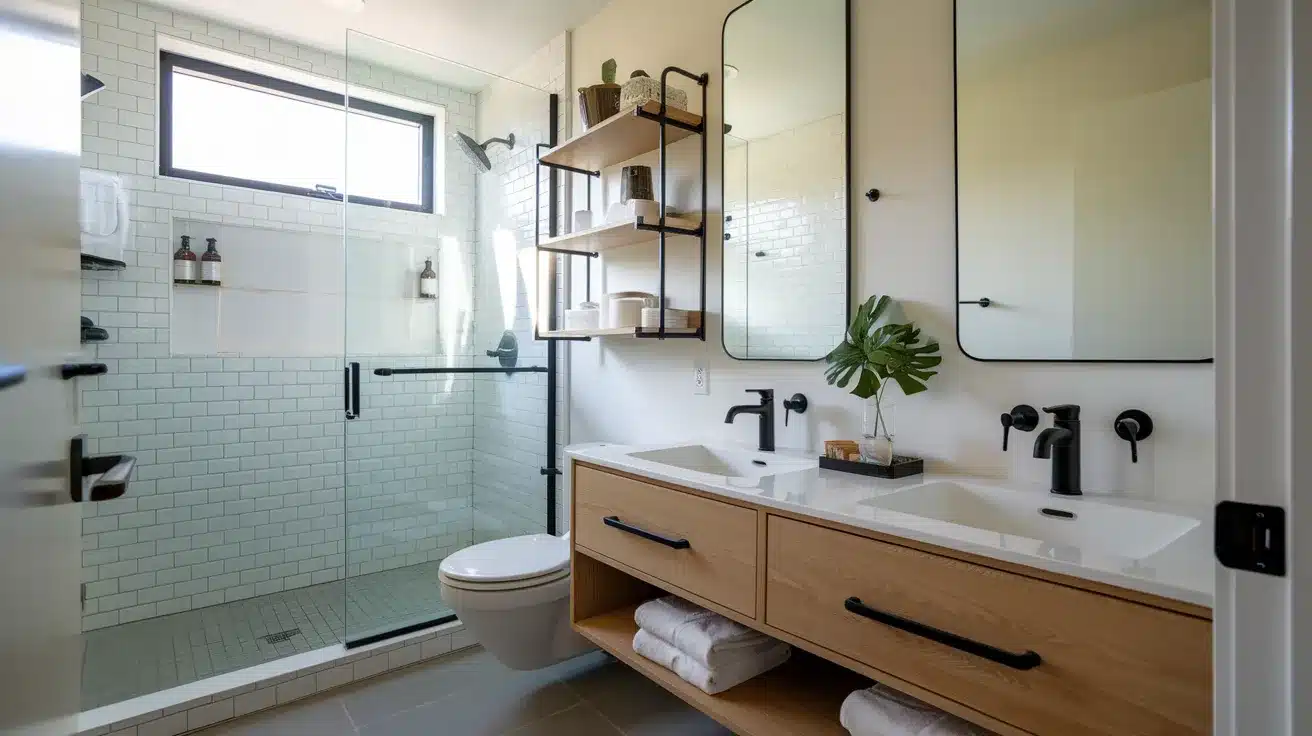
Small master bathrooms can still include luxury features with smart planning. Corner showers use space efficiently.
Wall-mounted toilets and floating vanities create more visual floor area. Pocket doors eliminate swing space requirements.
Vertical storage helps maximize wall space. Large mirrors create the illusion of more room. Appropriately sized fixtures maintain function without crowding the space.
Good planning makes small bathrooms feel more generous than their square footage suggests.
Open-Concept vs. Closed-Off Master Baths
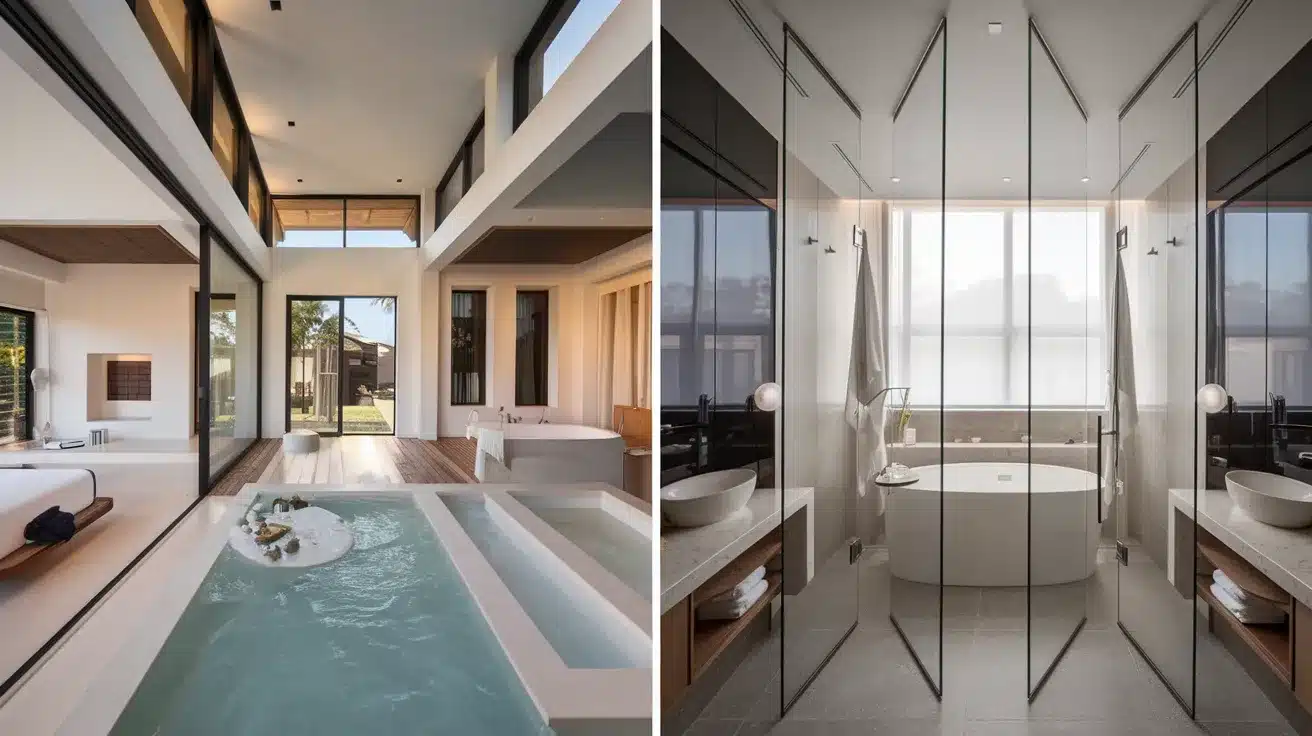
Open-concept bathrooms connect visually to the bedroom by removing barriers. This approach allows light to flow through both spaces and creates a sense of openness. It works well for couples with similar schedules and privacy preferences.
Closed-off bathrooms contain moisture better, provide more privacy, and minimize noise disruption. They also allow for separate temperature control. Many homeowners choose middle-ground solutions like glass dividers or sliding doors that offer flexibility between openness and privacy.
Your choice should reflect your comfort with visibility, typical household routines, and practical concerns like moisture control.
Eco-Friendly Master Bath Design
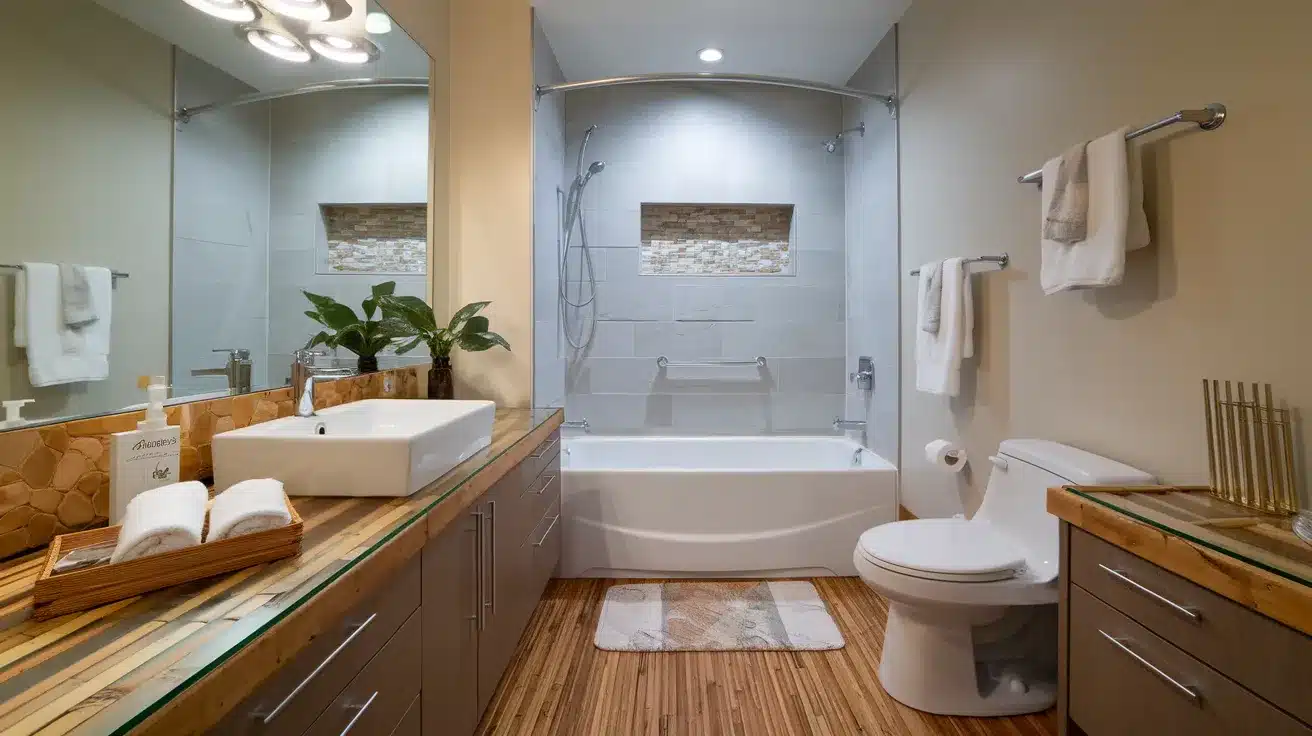
Creating an environmentally responsible bathroom balances luxury with conservation. Modern options make it possible to design a beautiful space that also respects natural resources.
Sustainable Materials and Fixtures
An eco-conscious bathroom starts with thoughtful material selection. Recycled glass countertops offer durability while keeping waste from landfills.
Bamboo and cork provide renewable flooring options that regrow quickly after harvest. FSC-certified wood cabinets ensure responsible forestry practices.
Low-VOC paints and GreenGuard-certified fixtures maintain healthy indoor air quality. Incorporating reclaimed wood or antique fixtures adds character while extending material life.
These choices create a bathroom that looks good and supports environmental health.
Water Conservation Tips
Smart water usage preserves this vital resource without sacrificing comfort. Low-flow showerheads and faucet aerators maintain pressure while using less water.
Dual-flush toilets allow appropriate water amounts for different waste types, saving thousands of gallons yearly. Motion-sensor faucets prevent unnecessary running water.
Smaller, deeper soaking tubs provide relaxation with reduced volume. Simple gray water systems can redirect sink water to toilet tanks.
These practical solutions cut water consumption while maintaining daily comfort and convenience.
Key Features of the Master Bathroom
A well-designed master bathroom includes essential elements that balance function with comfort. The most successful bathrooms focus on practical needs while adding thoughtful touches that improve daily use.
Custom Storage Solutions
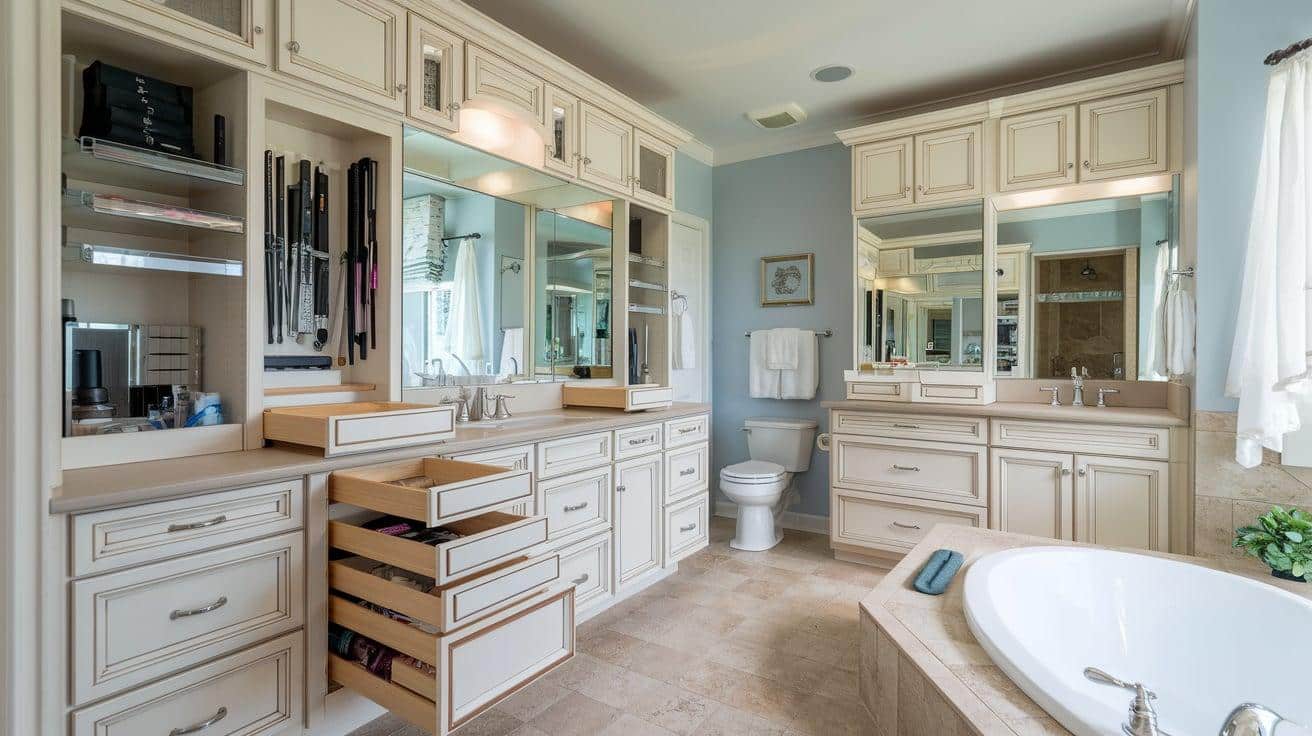
Custom cabinetry changes your bathroom with storage designed specifically for your items and routines. Measuring your space and planning for your actual needs results in more functional storage than standard options.
Consider pull-out organizers for smaller items, vertical dividers for styling tools, and specialized sections for makeup or grooming products.
Custom cabinets can work around plumbing and fit into awkward spaces that pre-made options can’t accommodate.
Statement Lighting
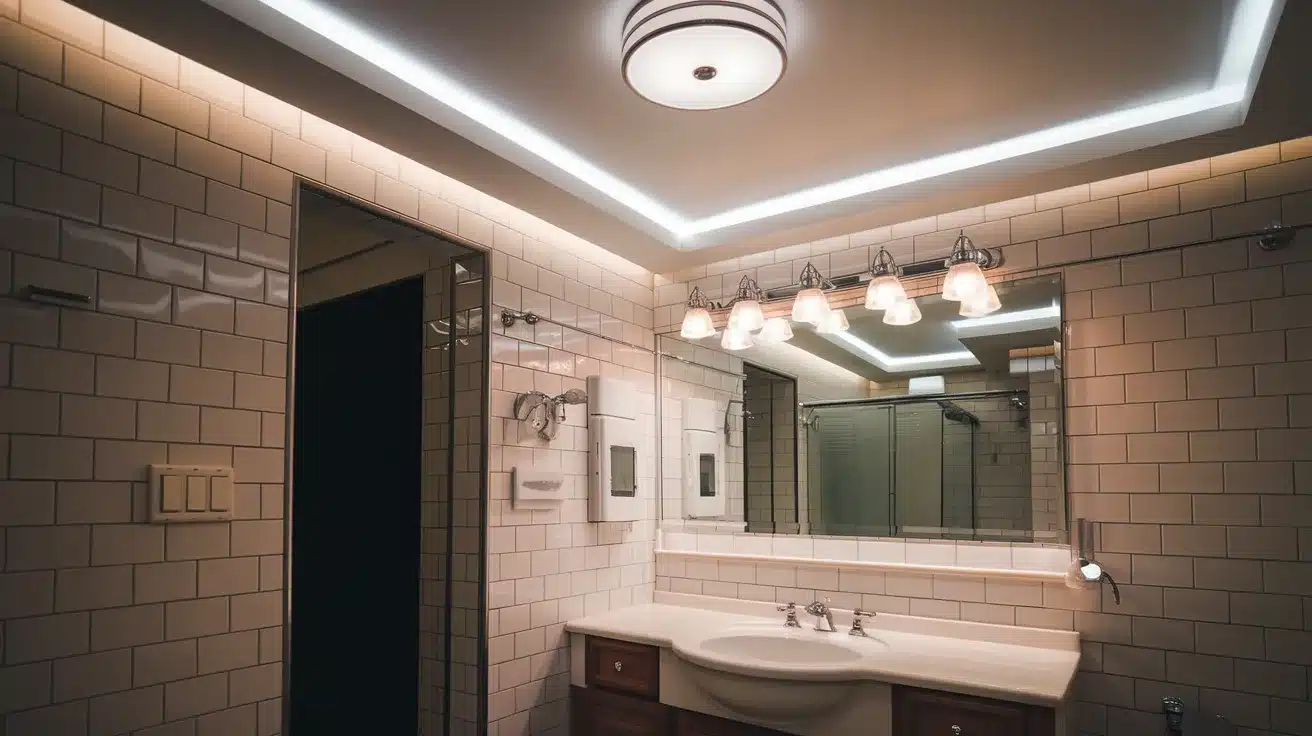
Distinctive lighting fixtures can turn an ordinary bathroom into a remarkable space. Chandeliers bring unexpected visual interest and create a focal point in larger bathrooms.
Select waterproof or damp-rated options specifically made for bathroom conditions. For a modern approach, consider pendant lights hung singly or in groups over vanities or tubs. These concentrated light sources direct attention while providing useful illumination for daily tasks.
Effective bathroom lighting comes from the thoughtful layering of different light types. Start with task lighting around mirrors for practical activities like shaving or applying makeup.
Installing dimmer switches allows you to adjust the intensity of each lighting type to create various atmospheres from bright morning energy to calm evening relaxation.
Unique Textures and Finishes
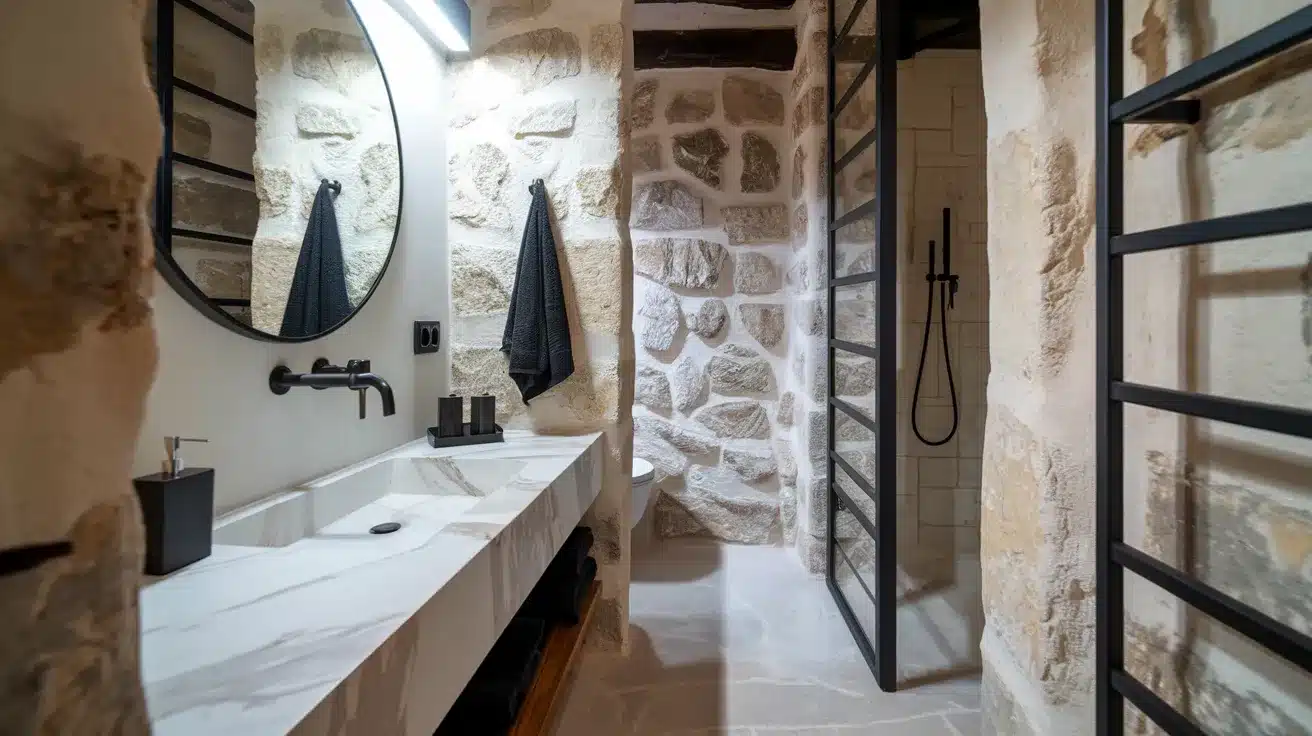
Mixing different surface textures creates visual and tactile interest in your bathroom. Pairing smooth marble or quartz countertops with natural wood cabinetry provides an appealing contrast that makes both materials stand out.
Consider stone accent walls against sleek glass shower enclosures, or rough textured floor tiles with polished fixtures. These thoughtful combinations add depth to your design without requiring extra space. Matte finishes on bathroom fixtures offer a subtle, sophisticated alternative to traditional shiny chrome or nickel.
These non-reflective surfaces hide water spots and fingerprints more effectively than glossy options. Matte black faucets and shower fixtures create strong visual lines against light backgrounds.
Incorporating Color

Soft pastel colors create a sense of calm that’s perfect for master bathrooms. Light blues and greens connect to water elements and promote relaxation.
Soft lavenders and pale pinks add warmth without overwhelming the space. These gentle colors make small bathrooms appear larger and reflect light effectively.
For added flexibility, introduce pastels through paint or accessories that can be changed easily as preferences shift.
Bold accent features can transform a basic bathroom into a unique space. Consider a vibrant tile backsplash behind the vanity or a striking shower wall that contrasts with neutral surroundings.
Conclusion
A well-designed master bathroom combines functionality, personal style, and thoughtful details to create a space that serves you daily. From layout considerations to material selections, each choice shapes how the room works and feels.
Natural elements, custom storage, strategic lighting, and varied textures can transform any bathroom, regardless of size or budget.
Remember that successful bathroom design starts with your specific needs rather than passing trends. Consider how you use the space, what features matter most to you, and which materials fit your maintenance preferences. Small changes like updated fixtures, accent colors, or improved lighting can make significant differences without major construction.
Take time to plan carefully, combining practical elements with personal touches that make the space truly your own!
Frequently Asked Questions
Can I include a double vanity in a small bathroom?
Yes, but priortize functionality over size to maximize your small bathroom’s potential and do ensure minimum 21-inch walking space.
Should I opt for a walk-in shower or a bathtub in my master bathroom?
Consider lifestyle and home value. Walk-in showers offer modern look and accessibility, while bathtubs provide relaxation and appeal to families with children and potential future buyers.

